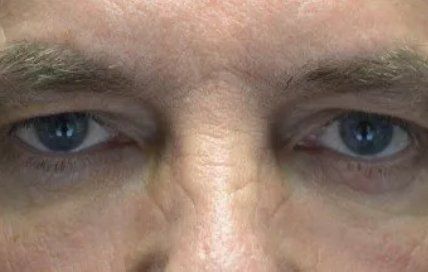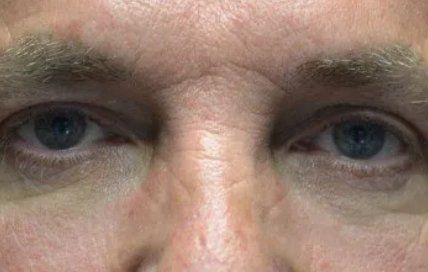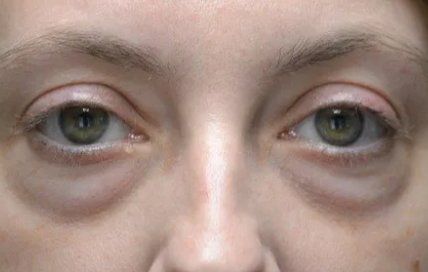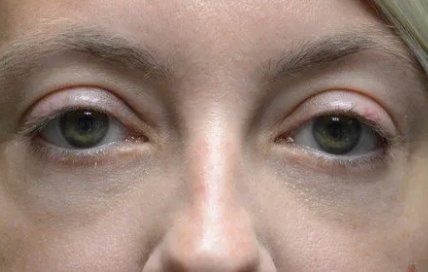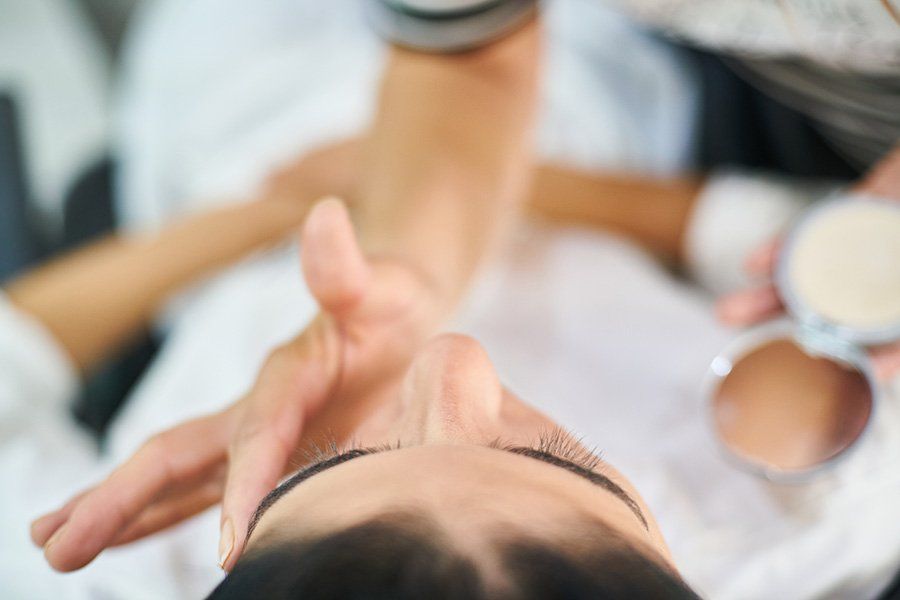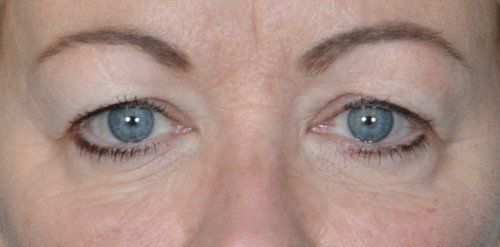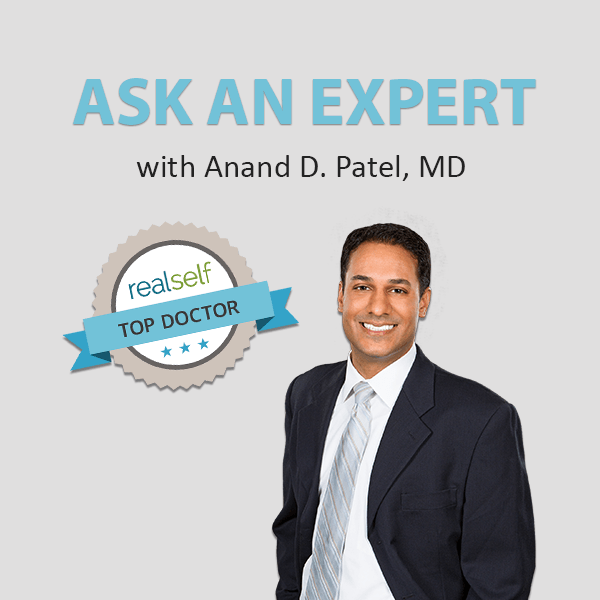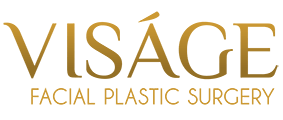Eyelid Procedures
The eyes are among the first areas to be affected by aging. You may have noticed a tired or severe look around the eyes that needs more than a good night’s rest. Patients with droopy eyelid skin, under-eye bags, and dark circles can benefit from an eyelid procedure (also known as Blepharoplasty). Blepharoplasty can help restore a refreshed, youthful appearance by removing excess eyelid skin and fat in just the right proportion to give a natural and refreshed look. For patients with dark circles and deep tear troughs, a fat repositioning procedure can enhance volume on the lower eyelids to help soften the transition from eyelid to cheek. A lid tightening procedure is performed for patients with eyelid laxity. Those whose brows have descended over time may also benefit from a brow lift in combination with blepharoplasty.
"From the moment I talked with Keri, I felt very confident. When I went in for my free consultation with Dr. Patel, I immediately liked him and trusted him. He was straight forward and realistic with my wants and goals. His whole staff is wonderful. I'm 3 days post op from lower eyelid surgery and couldn't be happier with my choice with Dr. Patel."
"I had a face lift and blepharoplasty procedures on both eyes. I would say to look no further than Dr. Patel for a surgeon whom you can trust to perform the most skilled procedures on your face. Dr. Patel took pictures during the consultation and then generated photos to compare to show anticipated results. Three weeks after, it is clear that the expected results will be achieved."
“For my 50th birthday I wanted to get my eyes done. My husband did the research for me and got me two consultations with surgeons in my area who had the best ratings. I selected Dr. Patel because I liked him a lot better, although I thought both would do a fine job. I am very happy with the results. I did not want to look "different". I wasn't going for something super dramatic. I just wanted to look more like myself. Is it worth it? A resounding yes."
Types of Eyelid Surgery
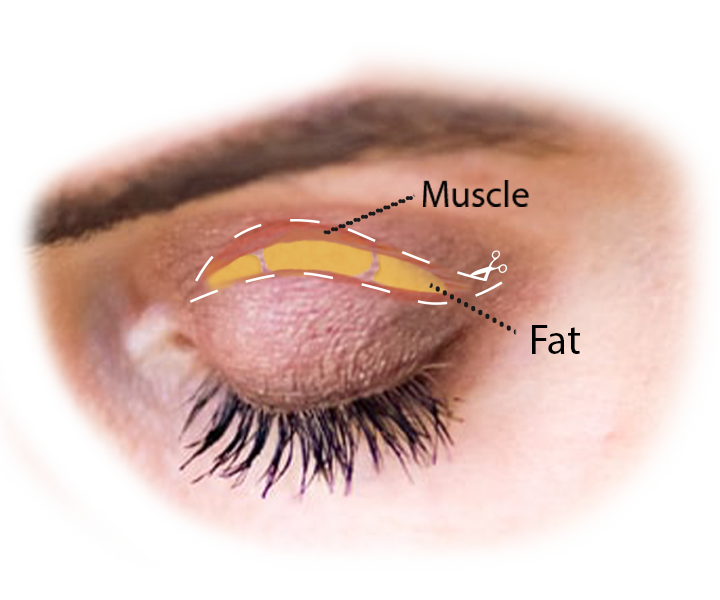
Upper Blepharoplasty
An upper eyelid lift involves removing a strip of skin from the natural crease of the upper eyelid. The effect of this is to remove excess skin that is folding over and onto the top eyelashes and to tighten any crepey skin. Any excess fat that creates a bulge may also be removed.
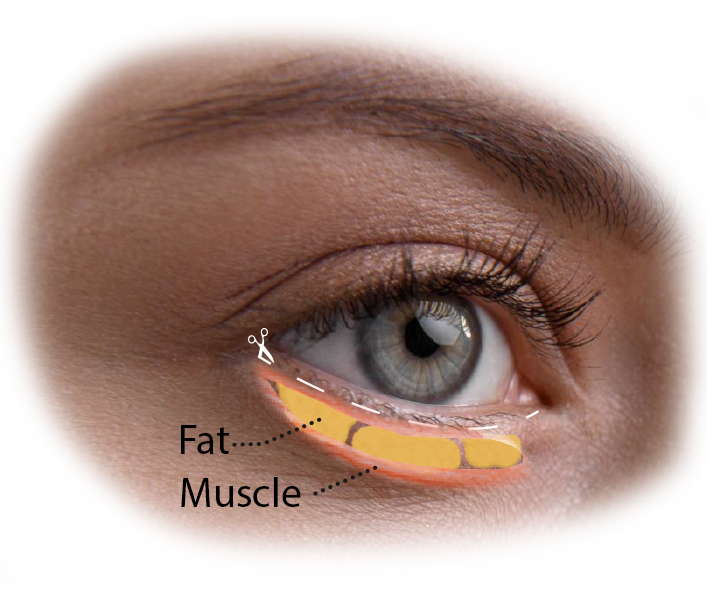
Lower Blepharoplasty
A lower eyelid lift involves removing a strip of skin and muscle from just below the eyelid margin and removing any lower eyelid fat that is forming a bag. This flattens the contour of the lower eyelid while tightening any crepey skin.
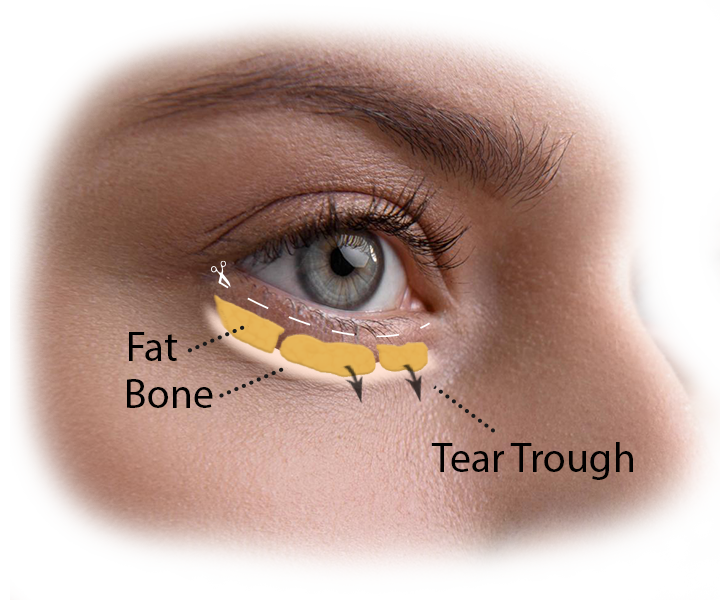
Fat Repositioning
The fat repositioning technique may be performed during a lower eyelid procedure. It involves moving the fat from a region of a lower eyelid bag into areas of volume loss under the eye, such as the tear trough (dark circle region). In effect, we are moving areas of volume excess to areas of volume scarcity. We like to call it “moving the mountain into the valley to create a flat plain.” This advanced technique helps to blend the junction between the lower eyelid and upper cheek, which gives an appearance of youth.
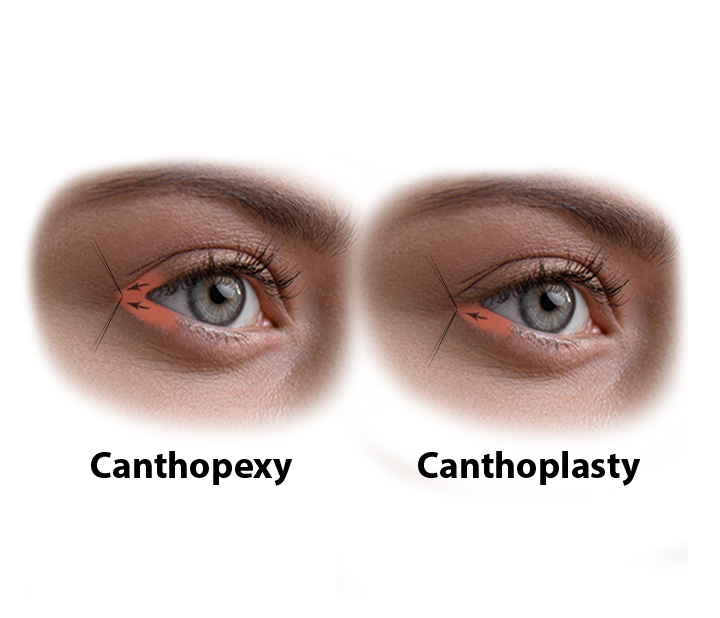
Eyelid Tightening
Loss of eyelid tone, usually from aging, may lead to a droopy lower eyelid and watery eyes. An eyelid tightening procedure is a procedure to tighten the rim of the lower eyelid. By tightening the eyelid, we can restore a youthful shape to the eye and may help tear function. This can be performed as a lateral canthopexy or canthoplasty. Canthopexy pulls the outer corner of the eye more laterally to tighten the eye aperture.Canthoplasty shortens of the length of the lower eyelid. This procedure can give round eyes a more almond-shaped appearance.
Planning Your Procedure
Pre-Operation
-
The Consultation
During the consultation, we want to get to know you and understand what makes you tick. We will review with you the changes you would like to make and their potential impact on your eyes, tear function, and life. We will also discuss your medical history and your current concerns. We will examine your eyelids to determine the optimal combination of procedures for you.
After the consultation, there is a second visit before surgery called a "pre-op." At this visit, we will go into much greater detail about how to best prepare for the coming surgery. We offer a wealth of information about optimizing your recovery, ensuring proper healing, resuming normal activities, and avoiding complications.
Operation
-
How It's Done
To achieve a natural look, it is essential to remove just the right amount of skin and tissue to create youthful eyelids. Dr. Patel believes it necessary to be conservative in tissue removal to avoid a hollowed appearance. In patients with a deep crease under their bags, often called the tear trough, he will re-position tissue from an area where it is bulging to fill the crease. This helps to create a smooth, natural transition from the lower eyelid to the cheek.
For long-lasting results, Dr. Patel places long-lasting sutures to suspend the eyelid. Patients who have age-related laxity of the lids may also require a lid tightening procedure to strengthen support. In all cases, the goal is to preserve the pre-existing shape and tilt of the eye to maintain a natural look.
-
Duration
Between 1 and 3 hours depending on how much is done and what techniques are used.
-
Anesthesia Options
Procedure may be performed with local anesthesia in the office, with the patient awake and eyes closed. If preferred, the procedure may be performed under general anesthesia at the surgery center. This is an outpatient procedure.
-
Incisions
For the upper eyelid, the incision is concealed in the natural crease and extends a short distance in a natural squint line. For the lower eyelid, the incision is concealed just below the lashes and also extends into a natural squint line. For some, Dr. Patel is able to hide the incision on the underside of the lower eyelid.
Recovery
-
Recovery
The typical at-home recovery time is 5-7 days. Immediately after the procedure, there will be protective strips of tape placed over any upper eyelid incisions and the incisions at the outer corners of the eye. These will restrict eye-opening but are very helpful in reducing swelling. They are removed the following day. Patients will typically be applying drops and ointment to the eyes around the clock to ensure proper moisture. By the end of the first week, all sutures are removed.
-
Pain
The first night, you will feel a dull ache and heaviness around your eyes. Everyday thereafter, any discomfort will reduce significantly. It is normal to take opiate medication for a few days after surgery, but most transition to regular Tylenol within the first week. A temporary dry eye sensation is normal while the eyelids are swollen and we will instruct you how to alleviate this.
-
Swelling and Bruising
Swelling and bruising are normal and mostly subside in the first week, though they may last a couple of weeks. Most bruising may be concealed with cover-up as it gradually fades. On average, 90% of the swelling subsides by 1 month after. In the end, all swelling and bruising will go away.
Patient Transformations
